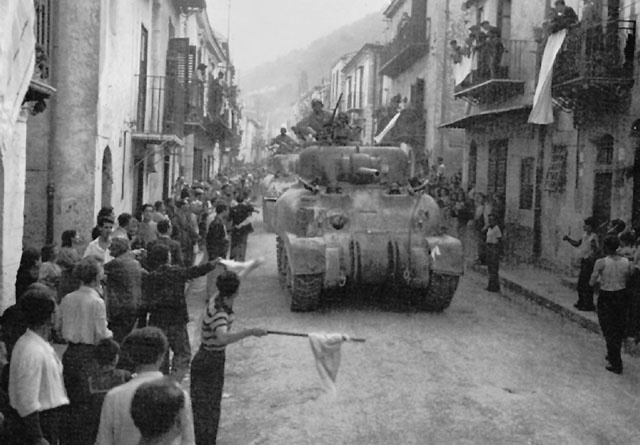



John comments on the fact that Margaret has sent this letter (and presumably at least several previous letters) using Air Mail, which was twice the cost of surface, first-class mail. Air Mail stamps for Margaret would have cost her $.06 apiece, as compared to a $.03 first class stamp. While this doesn't seem like much, the equivalent today would be $1.26 and $.63 for a standard rectangular envelope. Sending one or more letters a day would have, over time, added up to a substantial amount of money which is likely what John is alluding to by his comment.
The image below is of the 6¢ Carmine Transport Plane Scott #C25 stamp, issued on June 25, 1941.

Citation: "Stamps from 1940-1949." American Air Mail Society. 2023. Accessed on April 26, 2023. https://www.americanairmailsociety.org/resources/collecting-airmail/us-airmail-stamps/stamps-from-1940-1949/
Some significant events were happening overseas when John wrote this letter to Margaret. On this date, the US Seventh Army under the leadership of General George S. Patton takes Palermo, Sicily, without opposition during Operation Husky. Further away in Russia, the Battle of Kursk ends after Hitler withdraws troops and moves them south to reinforce Sicily.

Residents of Palermo, Sicily, greeted American tanks after the city’s surrender in 1943.Credit...Photograph by United States Army/Getty Images
Citation: Holland, James. "The Italian Job." New York Times. September 6, 2007. Retrieved April 26, 2023. https://tinyurl.com/Italian-Job
The following object description information includes basic elements from the Dublin Core Metadata Initiative (DCMI). An additional notes field is included to list dates from the actual letter, envelope postmark locations, and any other identifying details.
In this letter to Margaret, John is in California and bored; he seems to be waiting around for the next step in training. In reality, much of daily life in the military was waiting around, rather than the romanticized heroics of intense battles depicted in films. This meant that the seemingly small details such as hot meals and mail could significantly reduce the grinding boredom.
Army cook Sgt. Angelo Gepponi, a 77th Infantry Division Soldier during World War II, documented scenes of daily life in his unit using pen, ink, and watercolors; some of his sketches and drawings were even done on V-mail and then sent home. The image below is an example of Sgt. Gepponi's work.

Sgt. Angelo Gepponi, who served as a cook with the 77th Infantry Division during World War II, would paint scenes from daily life around camp. This watercolor, called "Field Mess Line (Untitled)," depicts Soldiers waiting to get chow.
Citations:
Hames, Jacqueline M. "WWII Army cook's artistic acumen captures everyday life of Soldiers at war." Soldiers. DMA (Defense Media Activity), September 23, 2015. Retrieved April 26, 2023. https://tinyurl.com/WWII-cooks-artistic-acumen
Gepponi, Angelo. "Field Mess Line (Untitled)." Retrieved April 26, 2023. https://tinyurl.com/WWII-cooks-artistic-acumen

| Caption | Map noting the Allied advances in Sicily, Italy, 12 Jul to 17 Aug 1943 ww2dbase | |||||
| Source | ww2dbaseUnited States Military Academy - https://ww2db.com/image.php?image_id=12158 | |||||
| More on... |
|
|||||
| Added Date | 21 Feb 2011 |